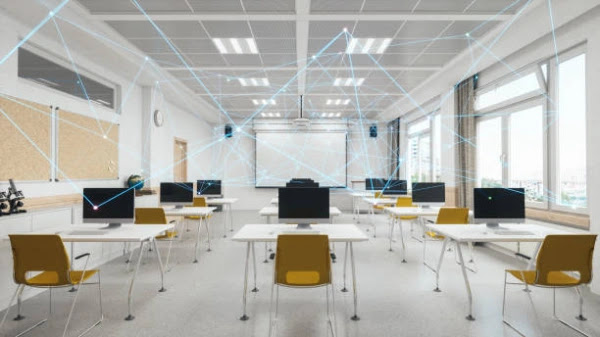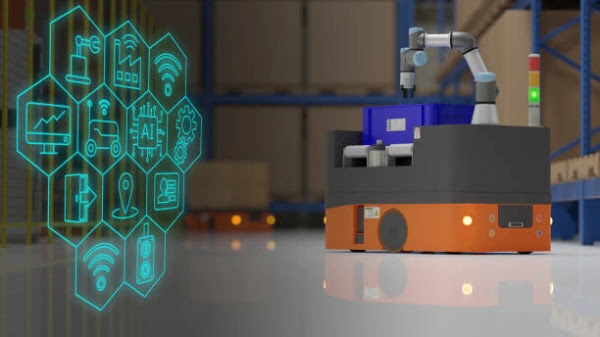Featured
- Get link
- X
- Other Apps
Smart Education
Integrating Technology in Learning Environments
In recent years, the landscape of education has undergone a
profound transformation with the integration of technology into learning
environments. This shift, often referred to as "smart education,"
leverages digital tools and resources to enhance teaching and learning
experiences, making them more interactive, engaging, and personalized. From
elementary schools to universities, institutions worldwide are embracing
technology to prepare students for the demands of the 21st century. This
article explores the various ways in which technology is revolutionizing
education and the potential benefits and challenges associated with this
integration.
One of the most significant advantages of integrating
technology into learning environments is the accessibility of information. With
the internet and digital libraries, students have access to a vast array of
resources beyond their textbooks. They can explore multimedia content,
interactive simulations, and educational apps that cater to different learning
styles and interests. This democratization of knowledge ensures that all
students, regardless of their background or location, have access to
high-quality educational materials.
Furthermore, technology facilitates personalized learning
experiences tailored to each student's needs and preferences. Adaptive learning
platforms use algorithms to analyze students' performance and provide targeted
recommendations and feedback. By adapting the pace and content of instruction
to individual learning styles and abilities, these platforms can improve
learning outcomes and student engagement. Additionally, educators can use data
analytics tools to track students' progress and identify areas where additional
support may be needed, enabling timely intervention and support.
Another significant advantage of technology in education is
its ability to foster collaboration and communication among students and
teachers. Online collaboration tools, such as Google Workspace and Microsoft
Teams, allow students to work together on projects, share resources, and
communicate effectively, regardless of their physical location. Virtual
classrooms and video conferencing software enable real-time interaction between
teachers and students, breaking down geographical barriers and facilitating
remote learning opportunities. These collaborative tools not only enhance
students' social and communication skills but also prepare them for the
collaborative work environments they will encounter in the future.
Moreover, technology offers innovative ways to engage
students and make learning more interactive and immersive. Virtual reality (VR)
and augmented reality (AR) technologies, for example, allow students to explore
historical landmarks, conduct virtual science experiments, or immerse
themselves in immersive simulations that bring abstract concepts to life.
Gamification techniques, such as educational games and quizzes, can make
learning more enjoyable and motivate students to actively participate in their
education. By incorporating these interactive elements into lessons, educators
can create dynamic learning experiences that capture students' interest and
attention.
Despite the numerous benefits of integrating technology into
learning environments, there are also challenges and considerations that
educators must address. One concern is the digital divide, which refers to the
gap between those who have access to technology and the internet and those who
do not. Inequities in access to devices and reliable internet connectivity can
exacerbate existing disparities in educational opportunities, widening the gap
between privileged and marginalized students. To address this issue,
policymakers and educational institutions must prioritize initiatives to bridge
the digital divide and ensure that all students have access to the technology
they need to succeed.
Another challenge is the potential for technology to
distract students and detract from their learning experience. The prevalence of
smartphones and social media can tempt students to multitask or disengage from
educational activities, leading to decreased focus and productivity. Educators
must be mindful of these distractions and implement strategies to minimize
their impact, such as establishing clear guidelines for device use during class
time and integrating technology in a purposeful and intentional manner.
Furthermore, there are concerns about the privacy and
security of student data in digital learning environments. With the increasing
use of educational apps and online platforms, there is a risk that sensitive
information about students' academic performance and personal characteristics
may be compromised. Educators and policymakers must prioritize data privacy and
implement robust security measures to protect students' confidentiality and
prevent unauthorized access to their data.
Conclusion.
The integration of technology into learning environments has
the potential to revolutionize education and empower students with new
opportunities for learning and growth. By leveraging digital tools and
resources, educators can create personalized, interactive, and collaborative
learning experiences that cater to the diverse needs of students. However, to
realize the full benefits of smart education, it is essential to address
challenges such as the digital divide, distractions, and data privacy concerns.
With careful planning and thoughtful implementation, technology can play a
transformative role in shaping the future of education.
- Get link
- X
- Other Apps


